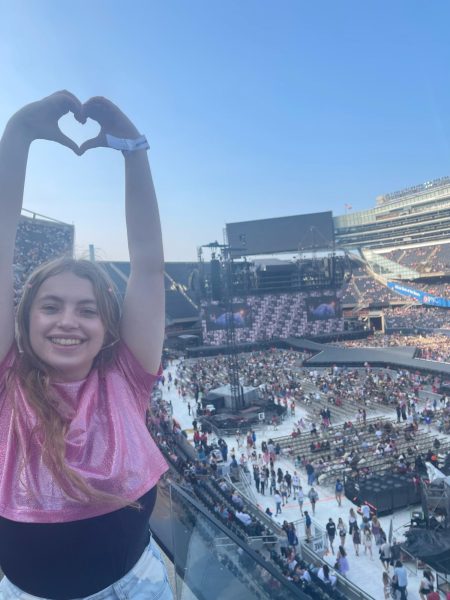Recently, both the Chicago Bears and the Chicago White Sox have released statements about wanting new stadiums. However, stadiums are expensive and require much more than just construction.
Typically, franchises sign contracts with the city the stadium is located in for government funds to renovate their stadium. This gives the city a cut from ticket sales and a potential venue for events with large turnouts, such as concerts. Additionally, most of the time the stadiums are being renovated or built in a location close to the original stadium. The issue for the Bears is that they want to leave Chicago, which means leaving all the infrastructure that supports gameday commotion.
Soldier Field, home to the Chicago Bears football team, is a landmark for the city and for sports. The lakefront stadium opened its doors on October 9, 1924, and saw its first game on November 22nd of that year between the collegiate Notre Dame Fighting Irish and the Northwestern Wildcats, drawing in a full capacity crowd. In 1927, the stadium hosted a boxing event that sold $2.5 million in tickets and the first ever ski meet at a stadium that still holds the record for attendance. Even the name of the stadium feeds into its legacy in sports history. The official naming in honor of those who served in World War I was commemorated with the 1926 Army-Navy game which was one of seven ties (the teams have faced each other a total of 124 times since 1890). The Bears didn’t even play at Soldier Field until 1971, previously playing at Wrigley Field which proved to be too small post AFL-NFL merger. However, the historic standing of the stadium is actually one of the reasons the Bears are leaving.
Soldier Field is simply too old.
The team recently purchased the plot of the old Arlington Heights Race Track. While the plot is a good idea, featuring lower taxes and less traffic in downtown Chicago, Arlington Heights lacks that infrastructure needed to support 70,000 fans almost every Sunday. The franchise has already promised to pay the $2-$3 billion estimated for construction, but Arlington Heights will need to spend hundreds of millions on renovating the whole town. This includes adding a hotel district and completely rerouting traffic patterns. Additionally, the town and the Bears have already hit a disagreement. Arlington Heights taxed the property as an operating business, but the Bears want it taxed as an empty plot, an overall difference being around $100 million a year. While the two parties have come to an agreement, the disagreement has had mayors across Illinois (including Waukegan) publicly offering meetings with the team about a potential stadium. Ultimately, the team has until 2033 to finish a new stadium if they decide to leave Soldier Field or renew their lease with the city of Chicago.
The White Sox moving is less about the franchise and more so about investors. The baseball team proposed a move from the South Side of the city to the South Loop. Hopes are that the stadium being downtown would potentially boost the economy which still has not recovered from the pandemic. The area surrounding the new stadium is neighboring a large amount of restaurants and high rises and the stadium would bring more consumers to the South Loop, therefore boosting the economy. However, Related Midwest and Gensler (investors) have stated an option to finance the new stadium is through tax dollars. While Chicago Mayor Brandon Johnson has voiced approval of the stadium, since Illinois Governor J.B. Pritzker has a strong disapproval of using taxpayer dollars to build sports arenas, it’s a guaranteed no. Another option for the White Sox is to reach a joint financing agreement with the Bears (who can clearly afford the project), but the Bears have not yet responded to the statement.
The two teams building new stadiums can also be helpful to the Chicago economy in an unexpected way. Suddenly, there will be two large venues that need a purpose. Soldier Field’s future is not certain because the city is still trying to keep the Bears at the stadium, but if they leave the stadium, it will become a year-long concert venue and possible convention center. This would be good for Chicago, especially after Taylor Swift’s Eras Tour and Beyoncé’s Renaissance Tour which were incredibly beneficial to the surrounding area. Related Midwest and Gensler included the future of Guaranteed Rate Field in their proposal. The stadium would be converted to a soccer stadium, as professional soccer has been gaining popularity in the United States recently. The extensive parking lots that belong to the field would then be converted into housing.
Even though for many Chicagoans this transition may be difficult and an end to an era, the new stadiums will be far more beneficial to the city.



